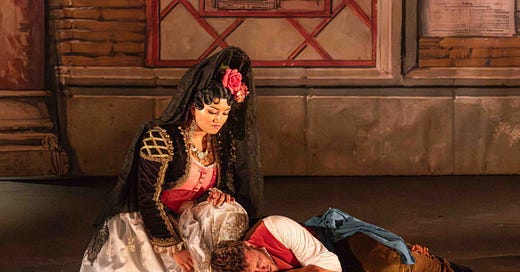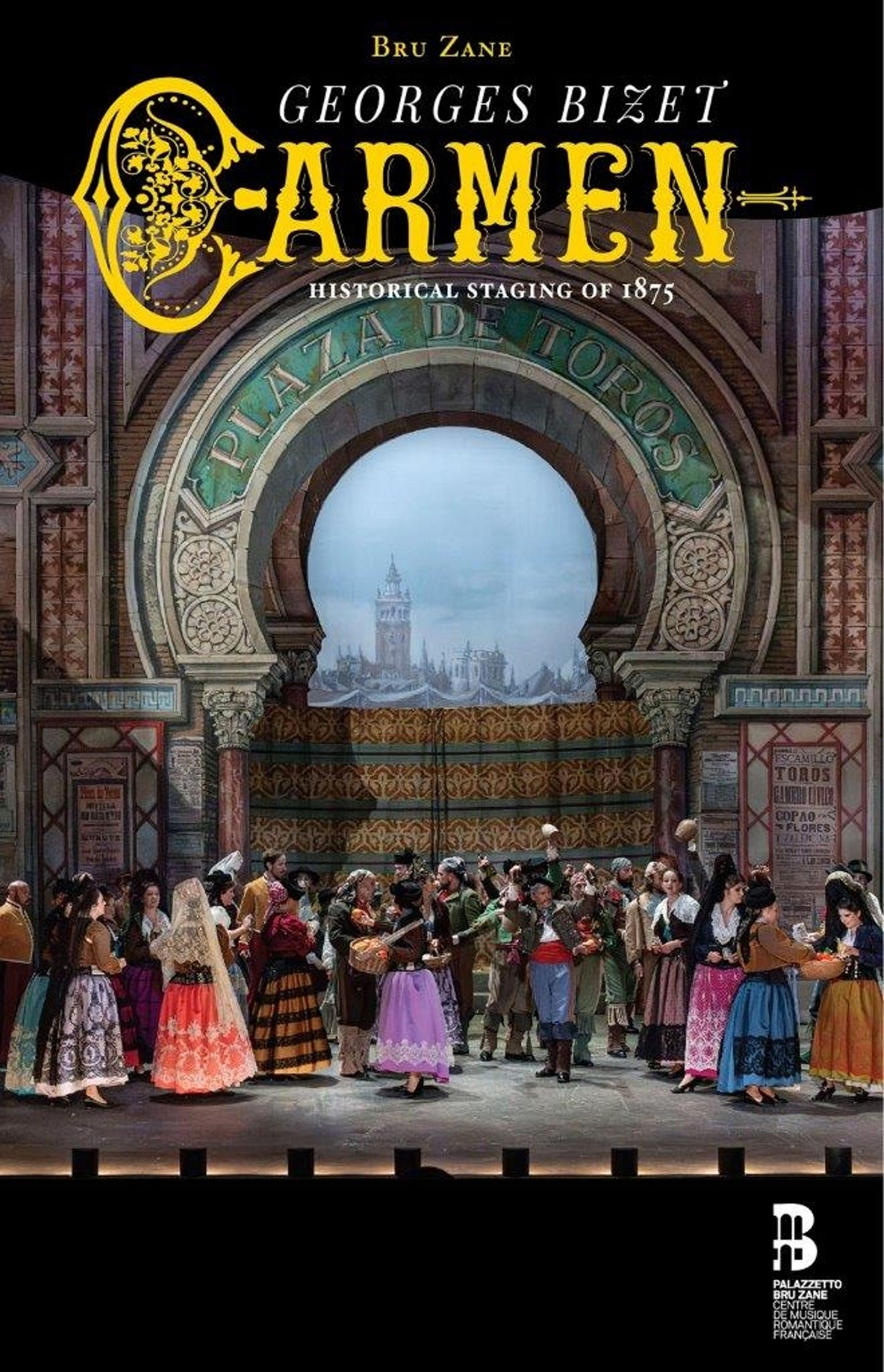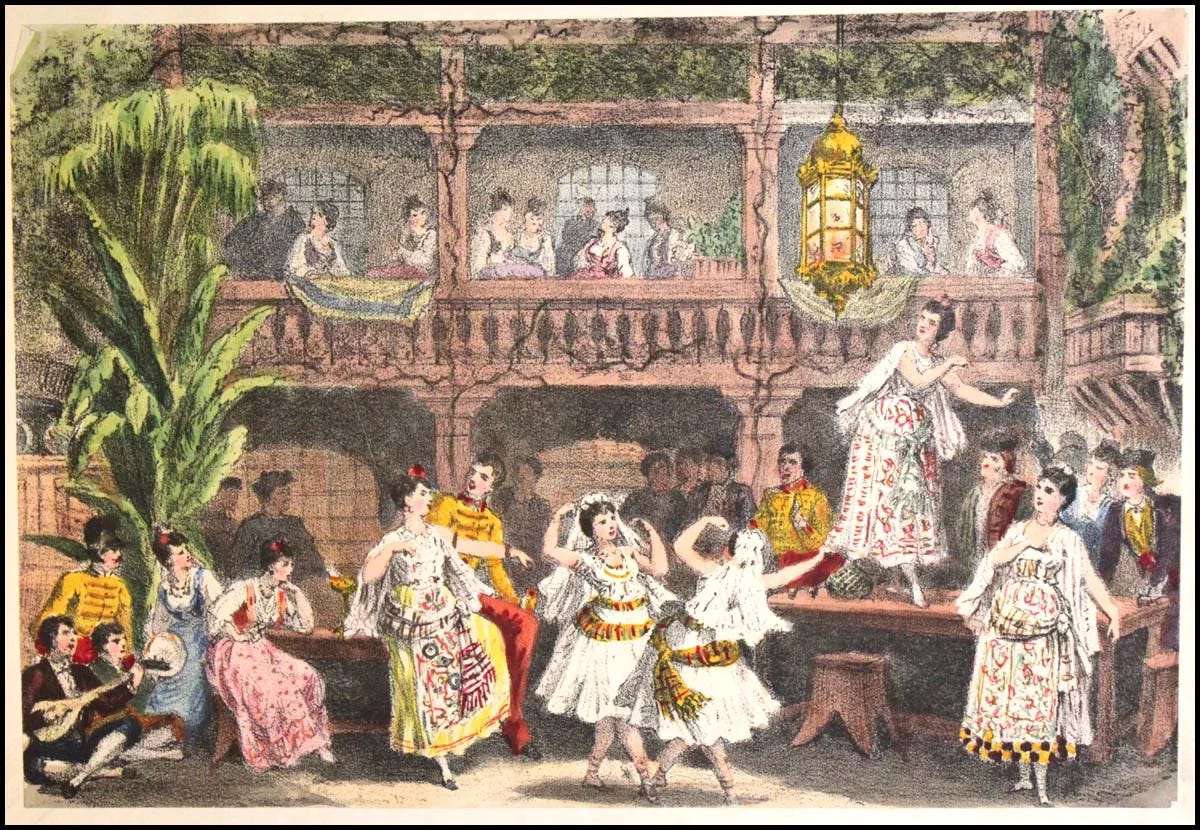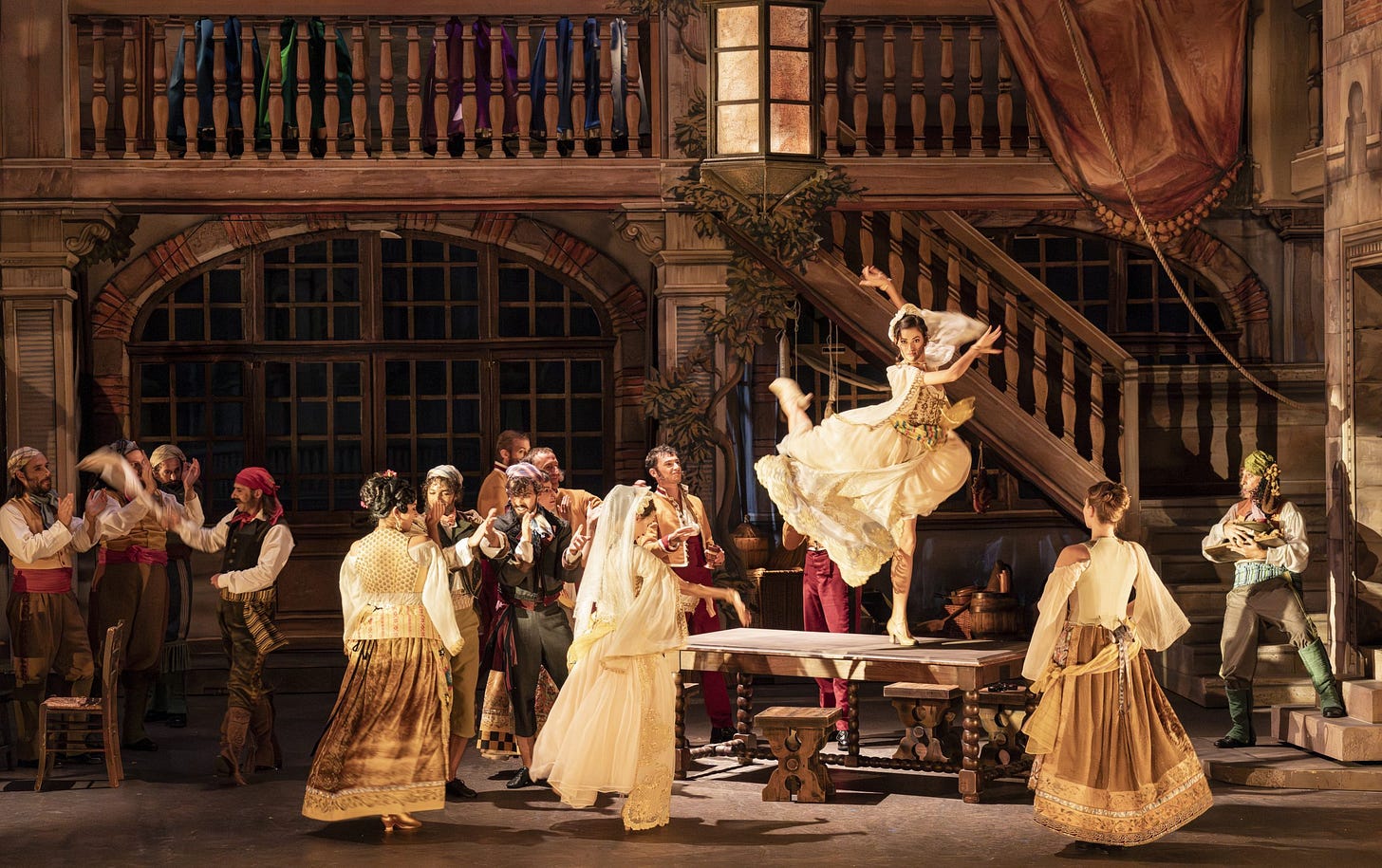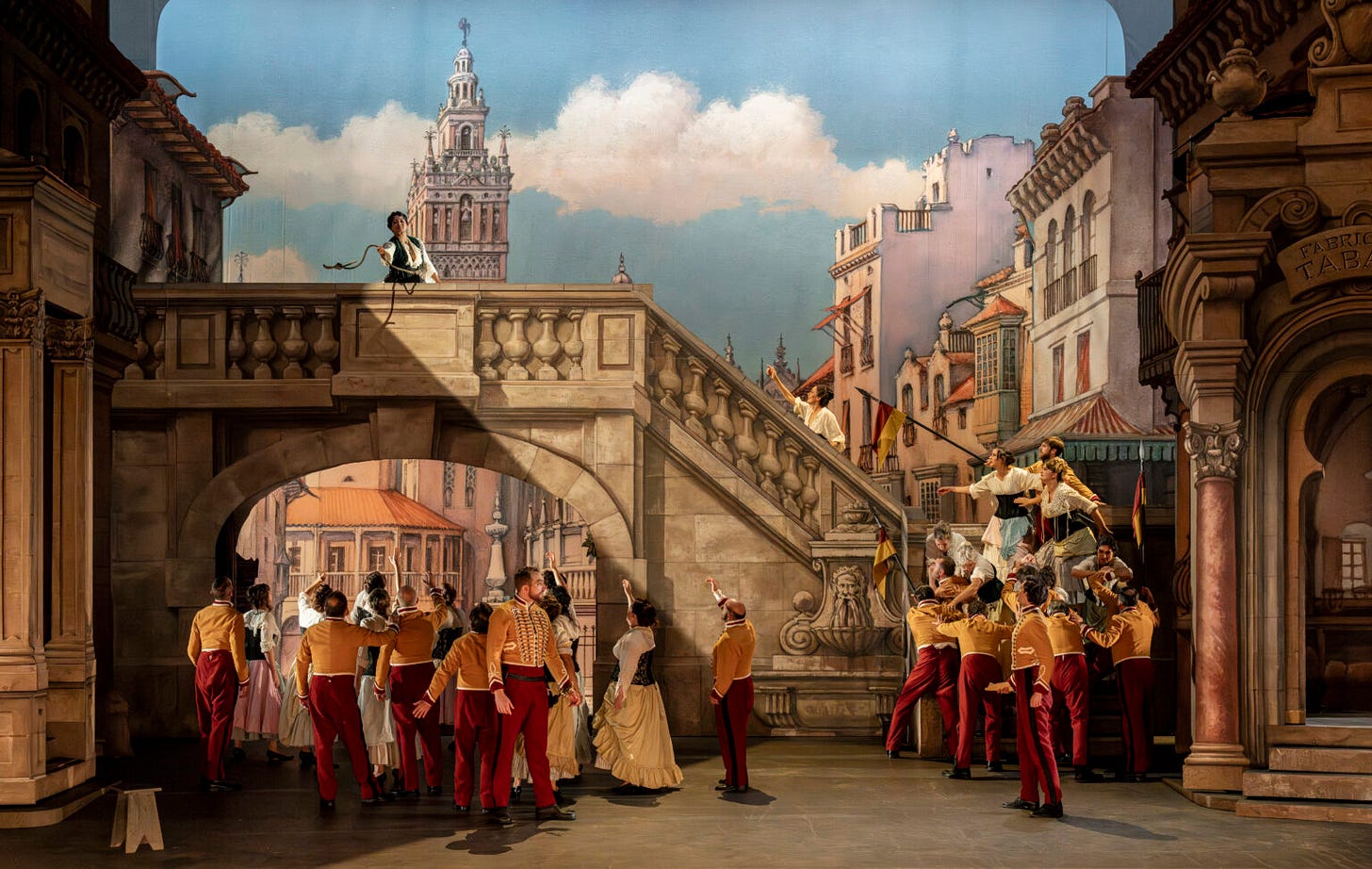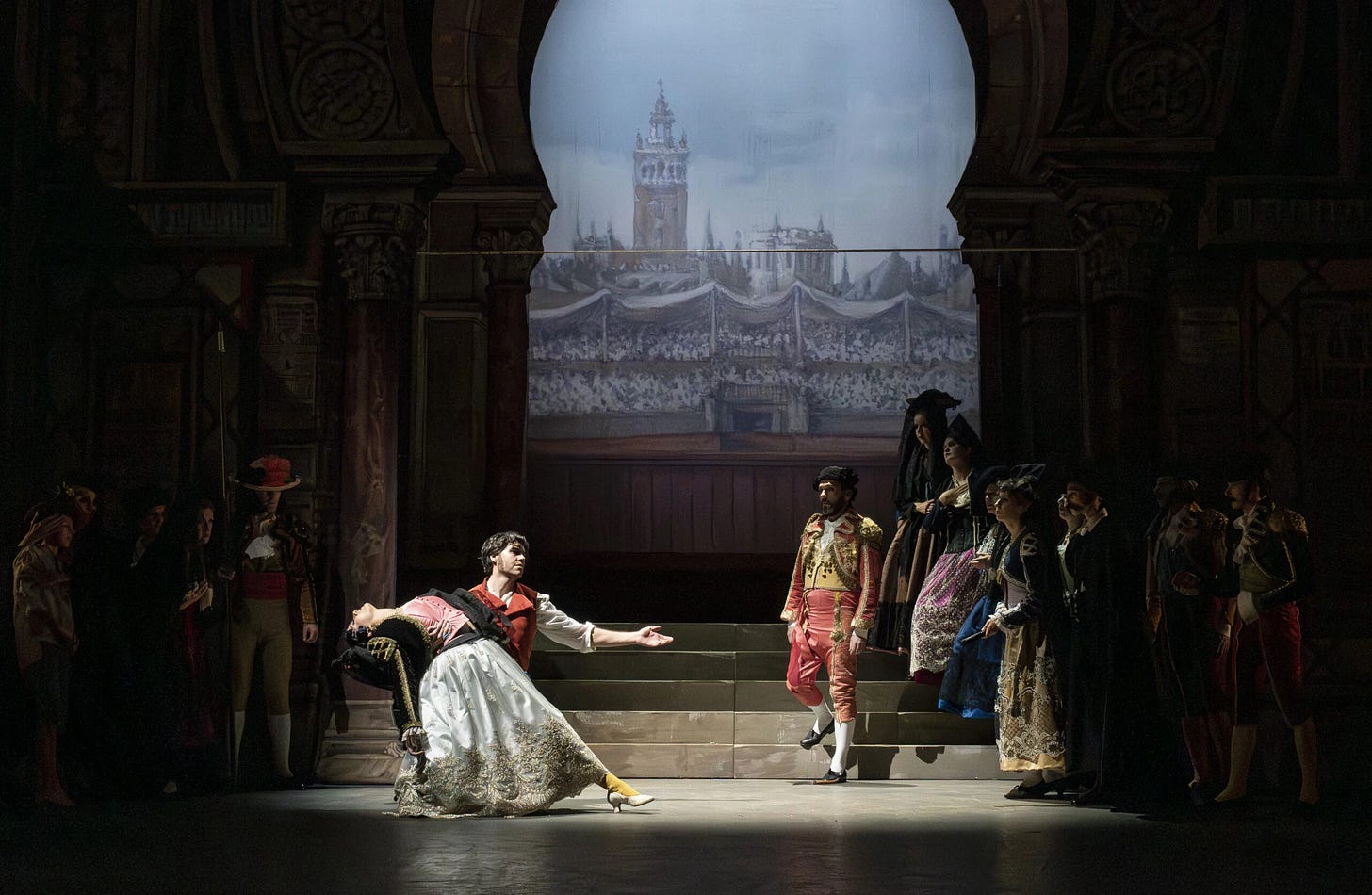Carmen in her original colours: Bru Zane dusts off the 1875 premiere
For the opera’s 150th anniversary, Bru Zane delves into the archives to show us what the premiere production may have looked like.
As musical archaeologists par excellence, the Palazzetto Bru Zane foundation is famed for its admirable work delving through the archives of 19th-century French repertoire and resuscitating long forgotten operas. These invariably lead to recordings, lavishly housed in hardback books which teem with supporting information and a libretto – quality products that have turned up some real treasures over the years.
Carmen is therefore a surprising new release. Bizet’s opera is one of the best-loved, most-performed operas out there, so what’s going on? In a new departure for Bru Zane, it has explored the history of the opera’s premiere and has helped produce a recreation of the original staging – “to see Carmen, as the first spectators at the Opéra-Comique saw her in 1875” – which is now released on DVD and Blu-Ray. It opened at Opéra de Rouen in September 2023, where I reviewed it for Opera Now, reporting that Romain Gilbert’s production proved to be “no dusty archaeological exhumation”. It’s about to play at co-producing Versailles, kicking off the opera’s 150th anniversary year.
Antoine Fontaine’s sets (exquisite painted flats) and the brightly coloured costumes by Christian Lacroix are based on, among others, Auguste Lamy’s lithographs, sold by the publisher Edition Choudens, showing a snapshot of each act, and Antonin-Marie Chatinière’s illustrations for the Galerie théâtrale. The whole thing looks splendid, particularly the colourful parade of chulos, banderillos and picadors in Act 4’s Plaza de Toros. Hervé Gary’s lighting designs attempt to mimic the effects of gaslight. Lamy’s illustrations are included in the 124-page book opposite production photos showing the same scene.
But what of the staging itself? There was no such thing as a stage director back then; the action would have been decided during rehearsals by the composer, librettist, stage manager and conductor, with the singers improvising a lot of the action. When entrances, exits and stage positions were decided, they would have been documented in a journal de régie, a staging manual which enabled the stage manager to remember who should be where during the performance and for the production to be revived both in the original theatre and in other houses. With the basic geography taken from the Opéra-Comique’s staging manual, director Romain Gilbert is given a pretty free hand when it comes to directing the singers and it’s to his credit that the production comes alive rather than look like an operatic Sealed Knot re-enactment society.
So what we have is an historically-informed period production… but musically, this is no period performance (although interestingly we do get Moralès’ rarely heard couplets in Act 1). The Opéra-Comique premiere would have been punctuated by speech between the musical numbers. Here, we get the recitatives composed by Ernest Guiraud for Vienna in October 1875, shortly after Bizet’s untimely death, that enabled Carmen to earn her passport to international acclaim.
Ben Glassberg elicits spirited playing from his Orchestre de l’Opéra de Rouen Normandie. The strings are on the dry side, but the woodwinds are quite wonderful, particularly the fruity bassoon in the Dragons d’Alcala entr’acte. There’s plenty of swagger to accompany the arrival of the bullfighters in Act 4, with robust contributions from the chorus, especially the ebullient children.
With one exception, the vocal performances are strong. Deepa Johnny is a fabulous Carmen, a lighter mezzo in the vein of Solange Michel, who sang the title role in the classic 1950 Opéra-Comique recording. Johnny’s Carmen is no sexed up femme fatale; she is dignified, but still alluring, teasing in her habanera and seductive in the seguidilla (straddling Don José is perhaps not very 1875!).
Stanislas de Barbeyrac is her Don José, drafted into the production after the first performance when tenor Thomas Atkins had to withdraw (Atkins features in the production photos used by Bru Zane, including – awkwardly – the book cover and in the bonus material documentary. De Barbeyrac’s tenor has a lot of heft these days (he sings Siegmund in The Royal Opera’s Walküre this season) but he scales it down to deliver a sensitive Flower Song. Gilbert plays on the fact that Don José has killed before to give the character that unhinged feeling of always simmering on the point of violence. Johnny’s Carmen certainly looks spooked as the Flower Song unfurls.
Iulia Maria Dan sings Micaëla, not always sweet-toned. “Je dis que rien ne m'épouvante” is a touch squally, but she’s fully engaged in the action. Nicolas Courjal is the fly in the ointment; his woolly bass is not for me, although he strikes a good pose as Escamillo. Supporting roles are well sung, especially Thomas Morris’ characterful Le Remendado.
Inside the hardback book are two discs – a DVD and a Blu-Ray – plus a slip of paper with a QR code to access the performance online. In one of the booklet essays, Bru Zane’s Alexandre Dratwicki ponders where the foundation may go next with historically-informed productions… with Les Contes d’Hoffmann, Faust and Samson et Dalila dangled as bait. Licking my lips.

